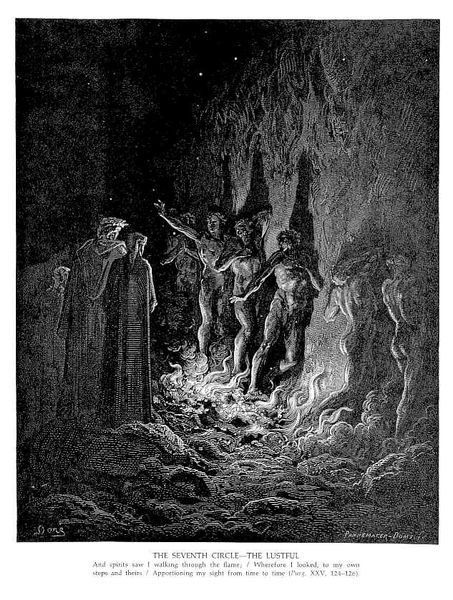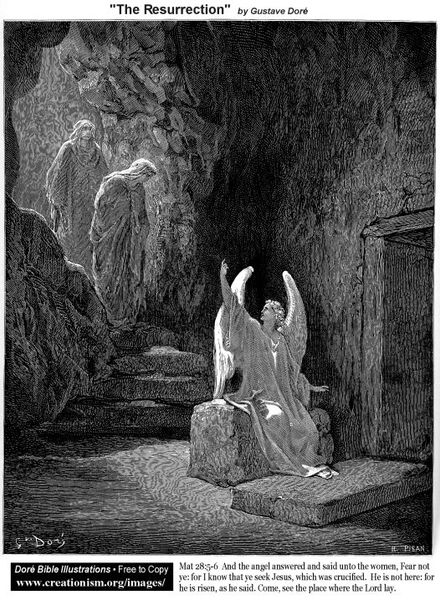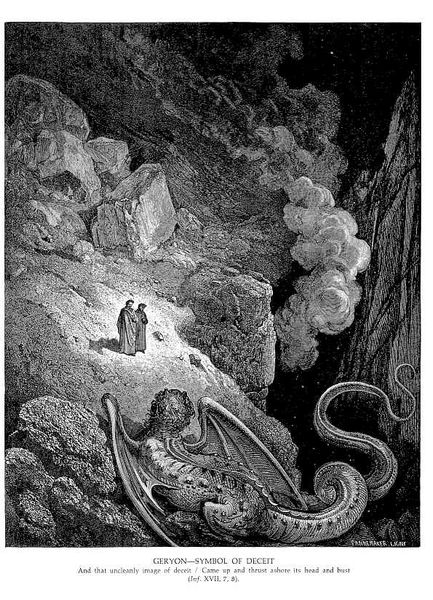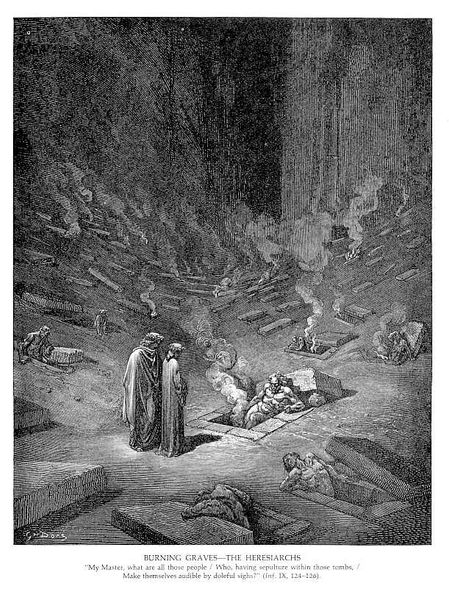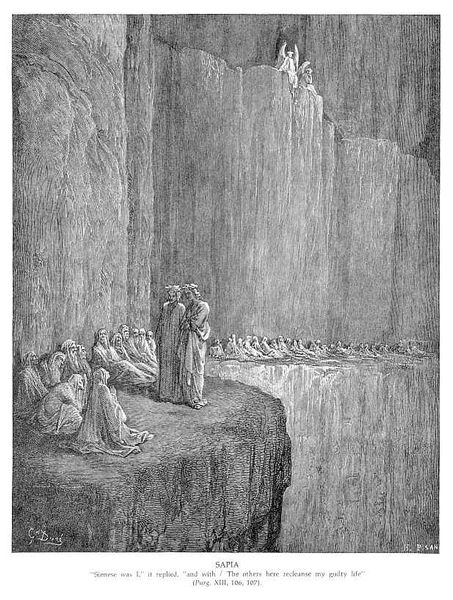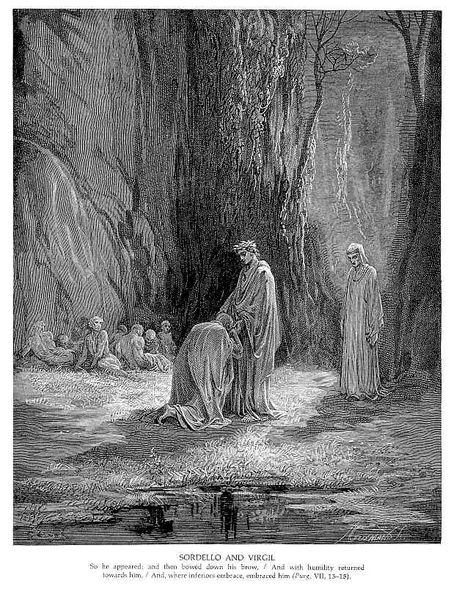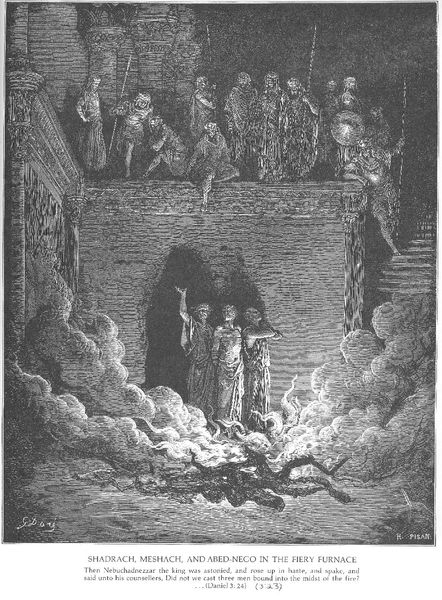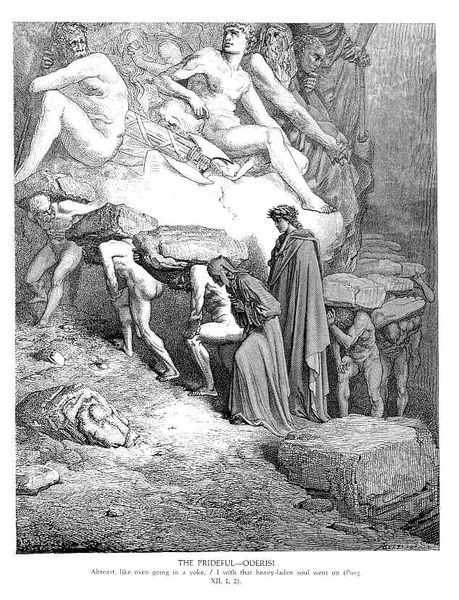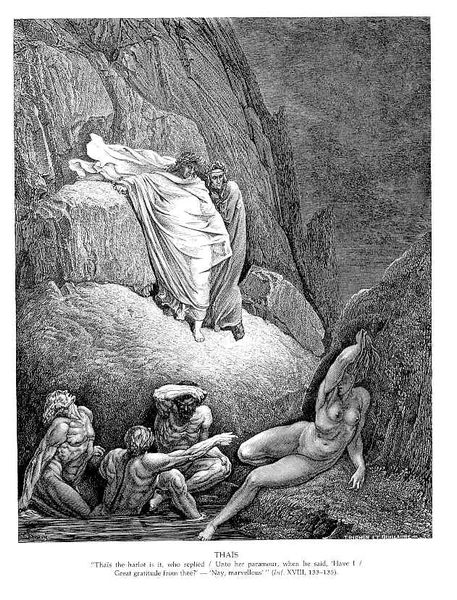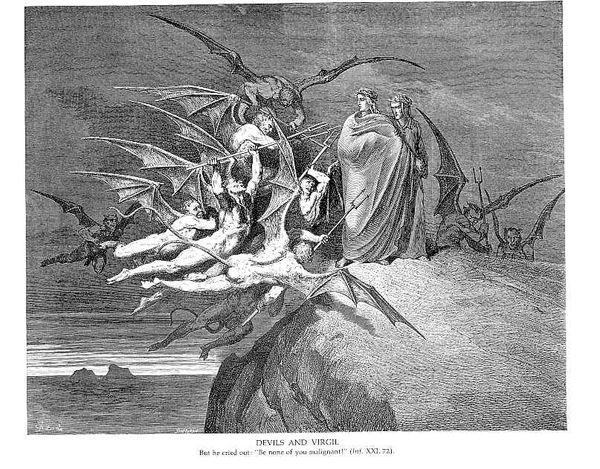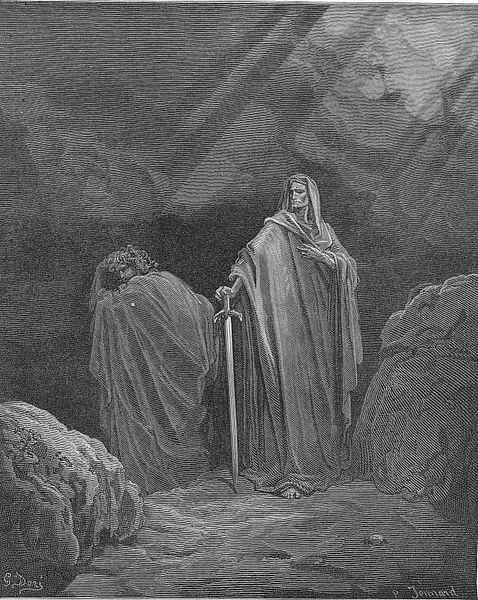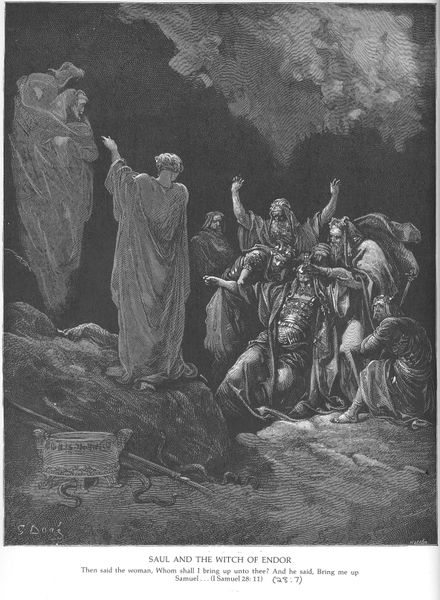
drawing, print, engraving
#
drawing
#
narrative-art
# print
#
landscape
#
fantasy-art
#
charcoal drawing
#
figuration
#
romanticism
#
line
#
history-painting
#
charcoal
#
engraving
Copyright: Public domain
Gustave Doré created this haunting engraving, titled "The Seventh Circle II," sometime in the 19th century. It’s made by carefully cutting lines into a metal plate, inking it, and pressing it onto paper to create a scene of immense detail, the kind of work that demanded incredible skill and patience. The stark black and white tones enhance the drama of the image, drawing us into Doré's dark vision of Dante's Inferno. Look closely at the contrasting textures, from the smoothness of the robes to the rough, jagged rocks, and the swirling chaos of the fiery pit. The sharp lines and precise details speak to the engraver’s mastery. Engraving was a key process in making images available to a wide public in the 1800s. But behind the compelling imagery of the print lay the labor-intensive process required to produce it. The engraver worked as a skilled craftsman, contributing to the mass dissemination of visual culture and knowledge. By focusing on the physical process of engraving, we can appreciate how this powerful image emerged from a combination of artistic vision and skilled labor. It's a reminder that even the most fantastical artwork is rooted in a tangible process, connecting artistic expression with the broader world of production and consumption.
Comments
No comments
Be the first to comment and join the conversation on the ultimate creative platform.
